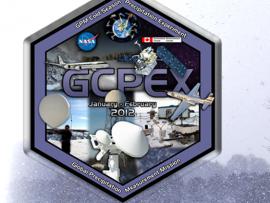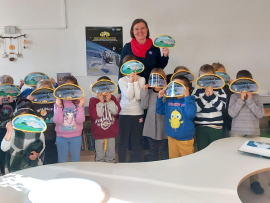Search
Primary tabs
Search
Your search for "climate" gave back 165 results.
Primary Topic:
Subtopics:
Type:
Standards:
Keywords:
Summary:
A summary of the GPM Cold-season Precipitation Experiment, which took place in January and February 2012 in Ontario, Canada.
Primary Topic:
Subtopics:
Type:
Keywords:
Standards:
Summary:
This website explores the technologies used to study and understand tropical cyclones.
Primary Topic:
Subtopics:
Type:
Standards:
Keywords:
Summary:
'Towers in the Tempest' is a 4.5 minute narrated animation that explains recent scientific insights into how hurricanes intensify. This intensification can be caused by a phenomenon called a 'hot tower'.
Primary Topic:
Subtopics:
Type:
Keywords:
Summary:
The monsoon is a seasonal rain and wind pattern that occurs over South Asia (among other places). Through NASA satellites and models we can see the monsoon patterns like never before.
Primary Topic:
Subtopics:
Type:
Keywords:
Summary:
NASA will dispatch two unmanned aircraft equipped with specialized instruments high above tropical cyclones in the Atlantic Ocean basin. These "severe storm sentinels" will investigate the processes that underlie hurricane formation and intensity change.
Primary Topic:
Subtopics:
Type:
Keywords:
Summary:
Humans need freshwater for many purposes, but it's not evenly distributed across our planet, which can create challenges for many communities.
Primary Topic:
Type:
Summary:
The GPM Mentorship Program – Educator Track is engaging with teachers and educators from kindergarten to high-school to provide them with resources to teach students about GPM, the water cycle, and Earths weather and climate.
Primary Topic:
Subtopics:
Type:
Keywords:
Summary:
Students will think about their experiences with hurricanes and severe storms, then learn the basics of what causes hurricanes to form. Students will learn how hurricane prediction has progressed, and how satellites can help us understand storms.
Primary Topic:
Subtopics:
Type:
Keywords:
Summary:
This My NASA Data lesson plan takes students through data from the GRACE satellite mission to help them understand where regions around the globe may experience a change in their freshwater availability.
Primary Topic:
Subtopics:
Type:
Keywords:
Summary:
Researchers need accurate and timely rainfall information to better understand and model where and when severe floods, frequent landslides and devastating droughts may occur, and GPM’s global rainfall data will help provide that information.











